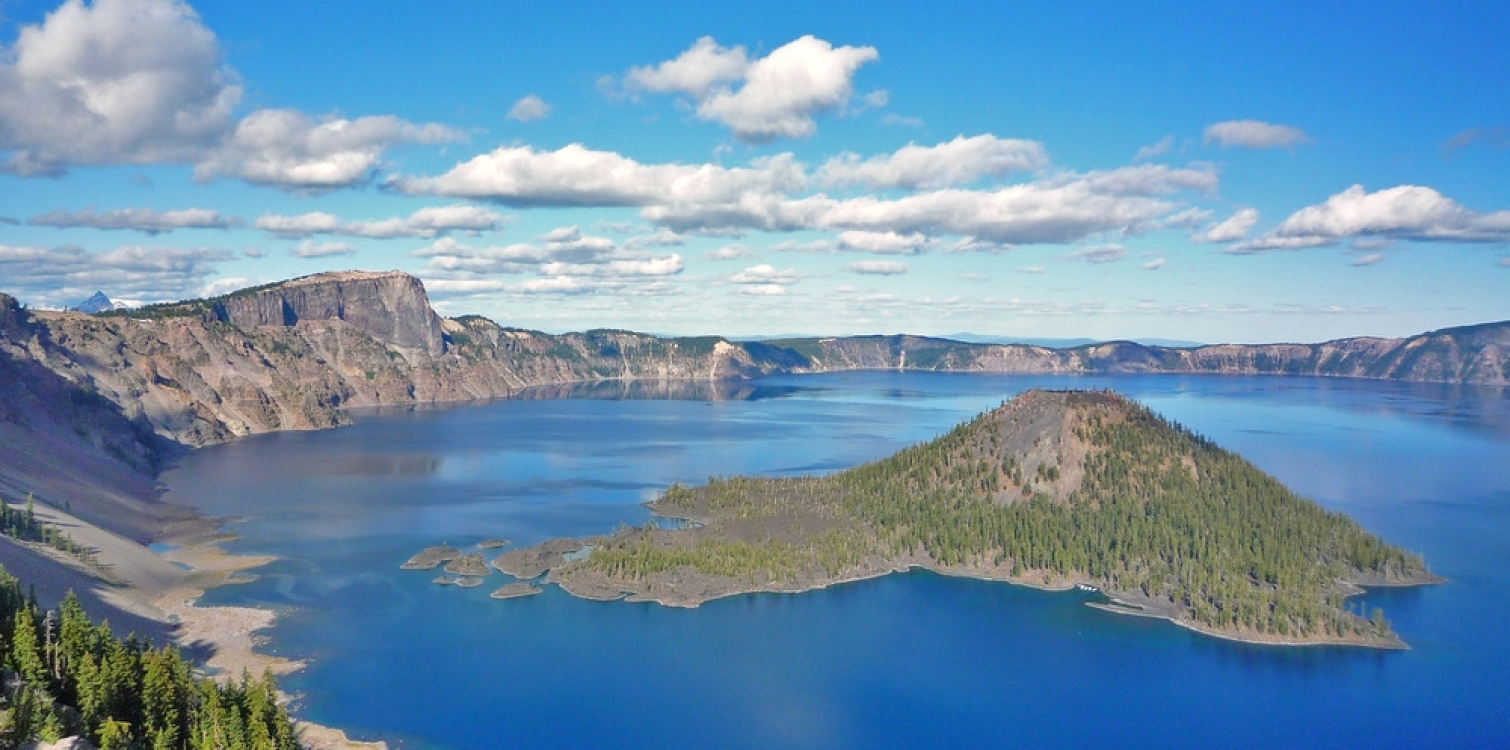Triglav National Park and Crater Lake National Park share many similarities, but there are also significant differences between them. Triglav National Park is slightly larger than Crater Lake National Park, encompassing the entire Julian Alps with its highest peak, Triglav. In contrast, Crater Lake National Park preserves a stunningly blue lake with an almost unbelievable depth of nearly 600 meters at its core.
Crater Lake National Park in the United States is twinned with Triglav National Park, which means that colleagues from both parks exchange experiences and learn a lot from each other. They also visit each other occasionally. John Duwe, who has been working at Crater Lake National Park since 2010, is responsible for education and works extensively with young visitors to the park. This year, he has already visited Slovenia, our mountains, and our youth for the third time. When he’s not at work, he enjoys long walks with his wife and their two dog friends.


John, you work as a ranger in one of the national parks in the United States. Crater Lake National Park is one of the 59 national parks in the U.S. Why do you think it is special? Is it very different from Slovenia's only national park?
For me, Crater Lake is special because of its beauty and uniqueness. It is both a high mountain and a deep lake. It is a dangerous volcano that presents itself to us as a calm mirror of the sky. We are lucky to experience it this way at this time. It is similar to Triglav National Park because it is a place where we protect nature and cultural heritage, both of which hold special significance. The landscape is different, but visitors come to both parks for the same reasons—to explore nature and connect with it, as well as with themselves.Most of your work in the park is related to visitors, especially children. What do children like to do in your park, and what interests them the most?
Children love Crater Lake! In winter, they enjoy playing in the snow, which can be over three meters deep! In summer, they like to ride bikes, observe animals and plants, or search for special trees. They also enjoy walking along the park trails and taking photographs. For the adventurous ones, they hike all the way down to the shores of Crater Lake. It’s quite a steep descent, as the lake lies deep in the volcanic crater, allowing them to swim in it.Can you tell us something interesting about the animals and plants in Crater Lake National Park? Do you ever encounter any animals in the field?
All the plants and animals in Crater Lake National Park must be able to survive the long winter. Some are migratory, some hibernate, while others endure the cold and snow. My favorites are those that withstand the conditions, like martens. They are hardy predators and tend to hang around the park buildings in winter—sometimes sneaking into the gift shop and stealing a candy! In the summer, I often spot deer, various types of squirrels, and marmots.In recent years, you have visited Triglav National Park several times and encountered many children exploring nature. What is your message to young explorers and nature lovers?
Deep down, most people love nature. Slovenian children are fortunate to have mountains, forests, lakes, meadows, and the sea—all of which they can explore. My message is: never stop exploring. Continue to seek connections between the history and nature of Slovenia and the rest of the world. Discover what makes your space special!National parks and other protected areas around the world are very important because they allow people to enjoy unspoiled nature. In your opinion, how can children and future generations contribute to nature conservation?
The most important thing children can do to ensure that exceptional natural areas remain protected for future generations is to become familiar with these areas and the world around them. They can gain this knowledge in school, as well as by visiting natural environments from which they learn. Nature is an exceptional teacher, and we learn best how to care for it by actually spending time in it. Of course, we can also find older people who have spent a lot of time in nature and head on explorations of the natural environment in their company, if possible.

